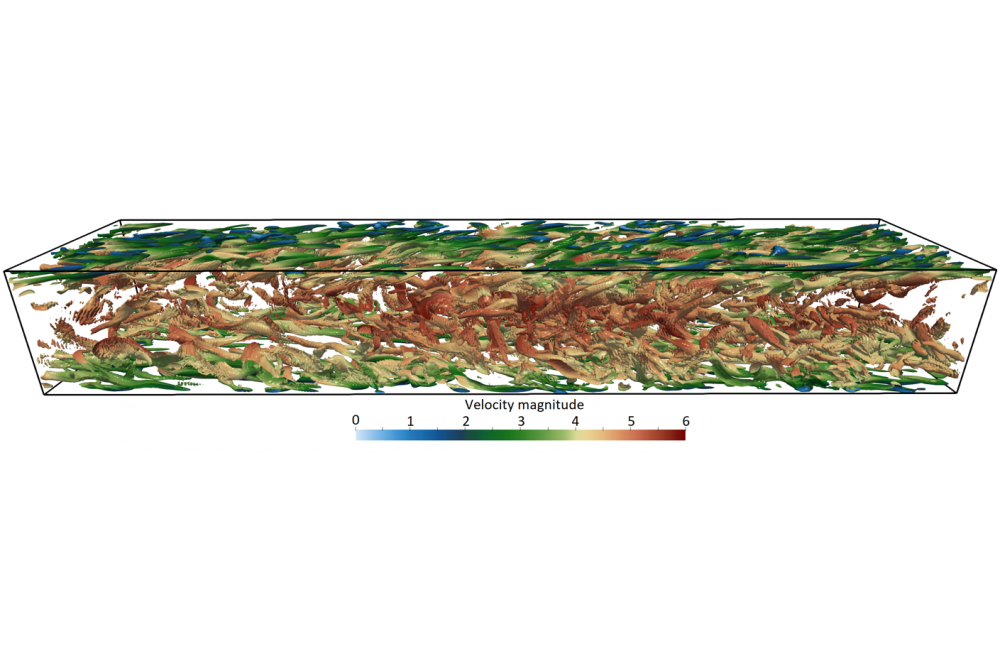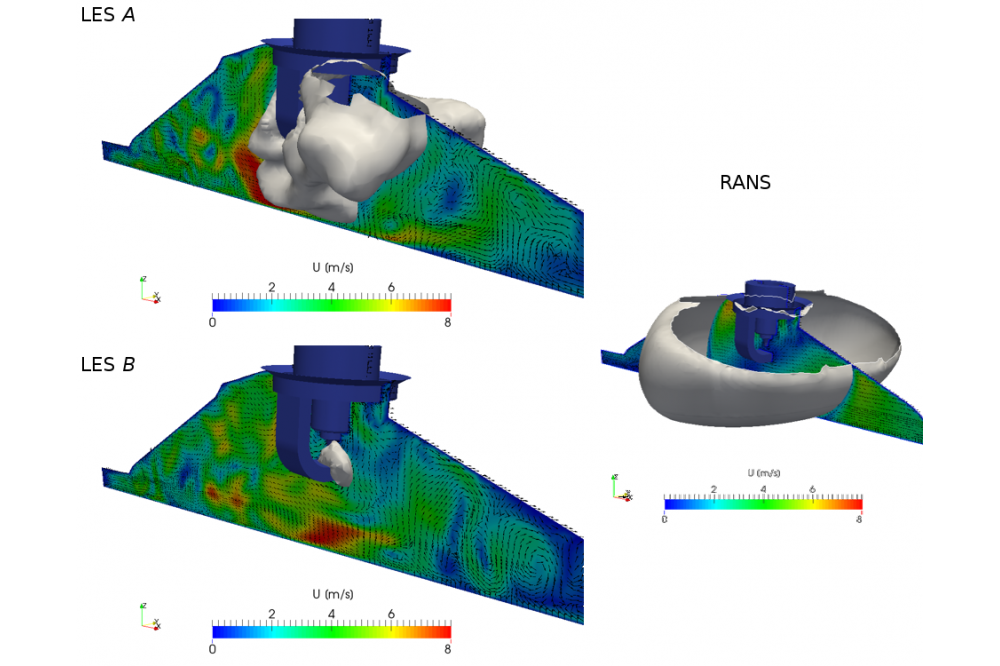LES-Based Investigation of Flame-Wall-Interactions
Introduction
In the context of global warming the necessity of efficient and low emission combustion applications arises. In addition to the use of alternative fuels, the current tendency is towards smaller internal combustion engines, which enable higher pressure ratios and, therefore, reach higher efficiencies. However, this evolution increases the surface to volume ratio, which leads to a growing influence of near wall phenomena on the overall combustion process. The interaction of the flame with the surrounding walls has a crucial influence on the overall efficiency. Due to heat-losses at the cold walls, the chemical reaction within the flame stagnates. This leads to incomplete combustion in close vicinity to the walls, which has a major impact on pollutant formation. To develop new features for the optimization of geometries and operating conditions in modern, low emission internal combustion engines the understanding of the underlying processes of the chemical reacting near wall flow is essential. Thereby, high-performance computing plays an important role.
Methods
A robust cell-centred finite-volume (FV) framework in the open-source toolbox OpenFOAM for turbulent reacting flows is developed and used. In this project, mainly two configurations are considered: a generic side-wall quenching (SWQ) scenario, focusing on the underlying physics, and an internal combustion (IC) engine aiming at a more realistic combustor device. The generic SWQ configuration, as well as the IC motor, are simulated using this framework. For the SWQ burner the combustion processes are modelled using detailed and tabulated chemistry. In the case of turbulent flows, Large Eddy Simulations (LES) with tabulated chemistry are performed to investigate the turbulent flame-wall interactions in the SWQ burner and the IC motor. The investigation of the interaction between the mathematical models in a complex application, such as the IC engine, represents an important challenge of this subproject. The engine simulation is performed through the key-grid approach, that allow the full control of the mesh quality before the simulation. In-house code based on the OpenFOAM framework is used to manage the mesh motion, mapping between different key grid meshes and topological change.
Results
With respect to the side-wall quenching burner, in the first period of the project, the necessary models for the tabulated chemistry, turbulence-chemistry interactions have been integrated in the OpenFOAM framework and tested on generic configurations and laminar flames. In addition, turbulent boundary conditions for the simulation of the lab-scale side-wall quenching burner experimentally investigated at RSM at TU Darmstadt have been generated and validated. Building the basis of a follow up numerical investigation of the burner, one the measurement data will be available. Additionally, a generic side-wall quenching case has been set up that will allow model validation in a controlled simulation environment. Therefore, a DNS simulation is prepared by one of the project partners at KIT in Karlsruhe. With the respect of engine, the entire framework for mesh motion, results mapping and simulation has been validated with RANS calculation. Satisfactory results have been achieved in term of in-cylinder velocity, pressure peak and performance, comparing to the Darmstadt Optical-accessible engine. LES submodels for wall interaction has been validated in term of incylinder velocity using a static flowbench. Testing of LES framework on engine has been started simulating the compression phase and the subsequent combustion on the Darmstadt Optical-accessible engine. Additional/Removal layer algorithm has been deployed, in combination with a custom-made decomposition method.
Discussion
The simulation of turbulent flame-wall interaction is still a challenging task due the multi-scale characteristic of the problem. To allow a meaningful simulation of a real-world combustor, like a gas turbine or an IC engine, it is necessary to develop efficient and accurate numerical models. In the side-wall quenching burner, these models are validated and show promising results when compared to experimental data. These model approaches are then transferred to a more challenging and complex problem, the internal combustion engine. Here, the interplay between different modelling approaches are tested and validated with high accuracy numerical results.





